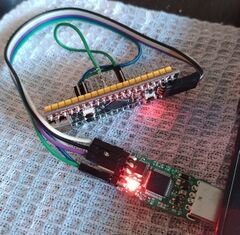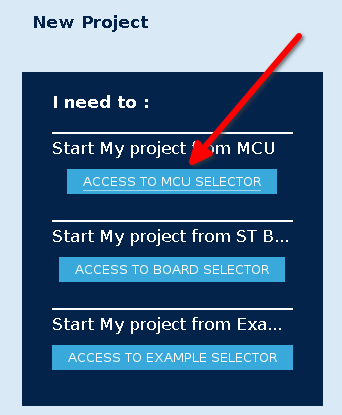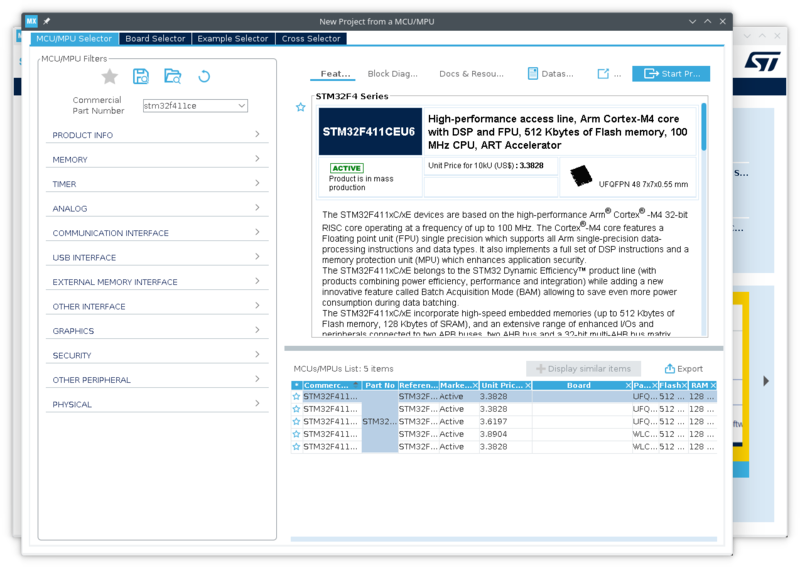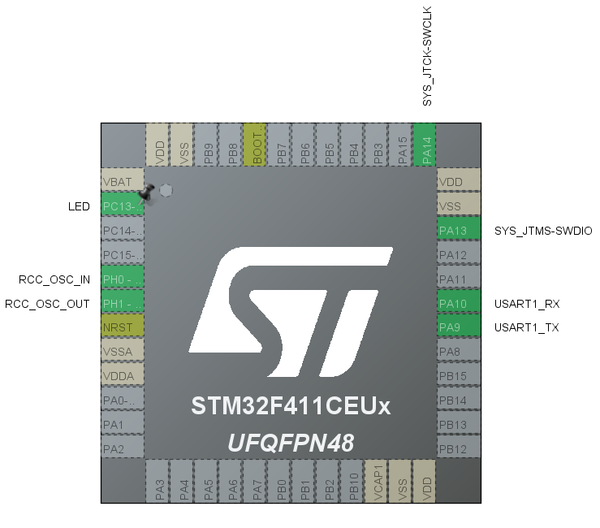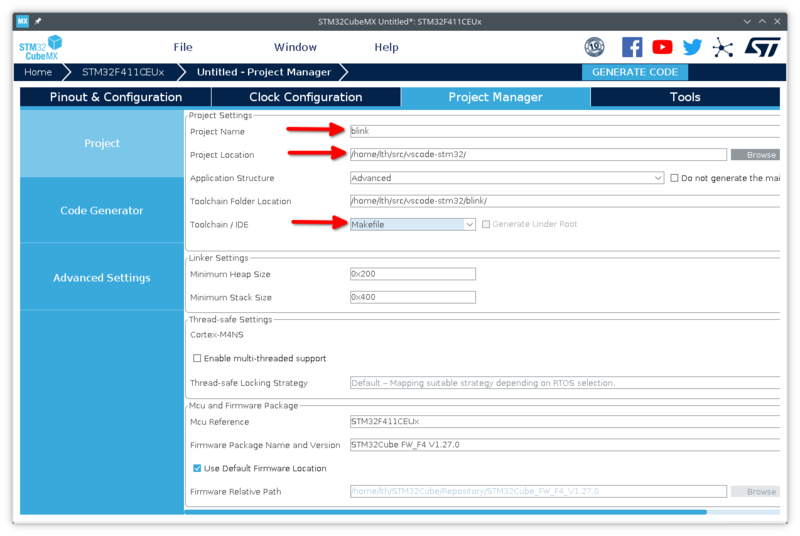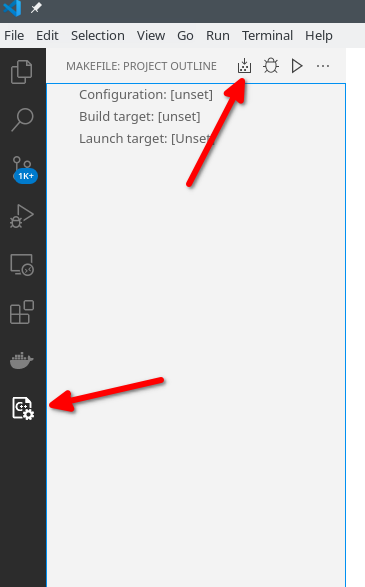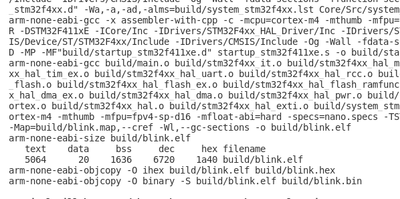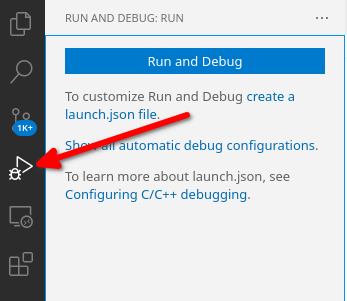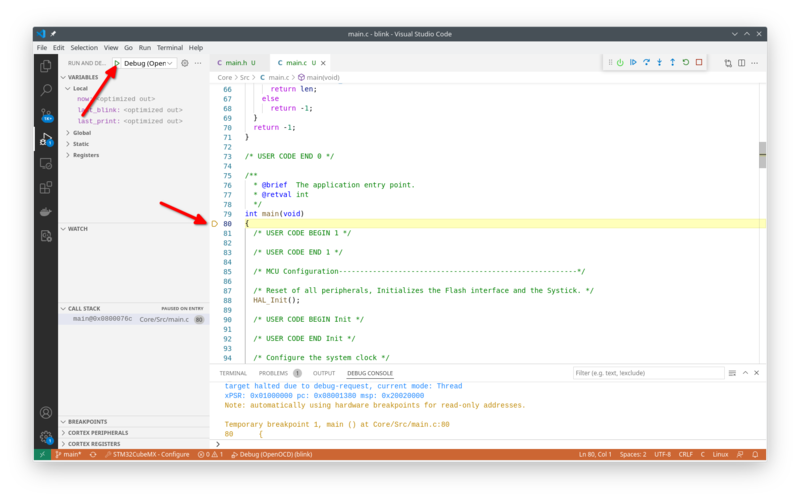STM32 development and debugging using VSCode
ST provide an IDE (Integrated Development Environment) for STM32 development. As a beginner's environment to learn embedded programming on STM32 MCUs this IDE is not half bad.
Notice, this page is probably out of date. Since written, ST have released their own plugin for VSCode.
Prerequisites
This example is developed on a standard Debian desktop system. On an Ubuntu system it should be almost the same.
Toolchain
The toolchain refers to the compiler and the tools to manipulate binary images. On Debian those are available in the standard repository:
$ sudo apt install gcc-arm-none-eabi binutils-arm-none-eabi
GNU Debugger (GDB)
The GNU Debugger (GDB) is also available:
$ sudo apt install gdb-multiarch
OpenOCD
To communicate with the actual STM32 MCU a JTAG/SWD tool is necessary. Fortunately the standard OpenOCD in Debian support STM32/ST-Link:
$ sudo apt install openocd
STM32CubeMX
STM32CubeMX can be downloaded directly from ST's Website.
Visual Studio Code
The final prerequisite will be VSCode itself. On a Debian system, the easiest way to install VSCode is to use the repository provided by Microsoft. In my case, I've added the repository:
lth@ncpws04:~$ sudo cat /etc/apt/sources.list.d/vscode.list deb [arch=amd64,arm64,armhf] http://packages.microsoft.com/repos/code stable main
Having that added, installation becomes a simple matter of:
$ sudo apt update && sudo apt install code
After installing VSCode a few extensions need to be installed. Those are:
- C/C++ Extension
- Cortex-Debug
- Makefile Tools
Starting a project with STM32CubeMX
When starting STM32CubeMX we can select "Access to MCU Selector":
This will bring us to the MCU selector:
Having selected the appropriate MCU or development board, we finally end up at the core of STM32CubeMX where we can configure the MCU and it's peripherals. In our case, this being a simple "blink" project, we enable PC13 as a GPIO output (labelled LED) and USART1 for serial communications. PC13 is also configured as "Open Drain" (not overly important in this case as pulling low will work too).
When done configuring the MCU and it's peripherals, move to the "Project Manager" tab and make a few changes:
The important ones are the Project Name, Project Location and Toolchain/IDE. When done click "Generate Code".
Notice, that it is always possible to go back and make changes in STM32CubeMX. Just start it again, load the project, make the changes and generate code again.
Editing Project in VSCode
When starting VSCode, select "Open Folder" and open the folder generated by STM32CubeMX in the previous section:
Before doing anything else, let us check if the system build by running "make":
The result, should be a binary image (.bin) file used for flashing the device.
Now that we know the project will build, let us make a few changes to the source. First of all, following the approach described here we create a "DBG" macro and ensure that printf prints on the serial console.
In 'main.h':
/* USER CODE BEGIN Private defines */
#ifdef DEBUG
#define DBG(...) printf(__VA_ARGS__);\
printf("\n");
#else
#define DBG(...)
#endif
/* USER CODE END Private defines */
In 'main.c' we first include "stdio.h":
/* USER CODE BEGIN Includes */ #include "stdio.h" /* USER CODE END Includes */
Then we create the redirection of printf to USART1:
/* Private user code ---------------------------------------------------------*/
/* USER CODE BEGIN 0 */
// Send printf to uart1
int _write(int fd, char* ptr, int len) {
HAL_StatusTypeDef hstatus;
if (fd == 1 || fd == 2) {
hstatus = HAL_UART_Transmit(&huart1, (uint8_t *) ptr, len, HAL_MAX_DELAY);
if (hstatus == HAL_OK)
return len;
else
return -1;
}
return -1;
}
/* USER CODE END 0 */
We are now in business and can modify our main loop as we please:
/* Infinite loop */
/* USER CODE BEGIN WHILE */
uint32_t now = 0, last_blink = 0, last_print = 0;
while (1)
{
now = HAL_GetTick();
if (now - last_blink >= 500) { // Every half second or 500 ms
HAL_GPIO_TogglePin(LED_GPIO_Port, LED_Pin);
last_blink = now;
}
if (now - last_print >= 1000) {
DBG("Tick %lu", now / 1000);
last_print = now;
}
/* USER CODE END WHILE */
/* USER CODE BEGIN 3 */
}
Again we run make to ensure the project still build.
Finally let us try to run a debugging session. First click Run and Debug:
The first step is to let cortex-debug know where to find our debugger. In the case of Debian, create the following in .vscode/settings.json:
{
"cortex-debug.gdbPath": "gdb-multiarch",
"makefile.extensionOutputFolder": "./.vscode"
}
Since we have not yet configured debugging click Create a launch.json. Fill in the following:
{
// Use IntelliSense to learn about possible attributes.
// Hover to view descriptions of existing attributes.
// For more information, visit: https://go.microsoft.com/fwlink/?linkid=830387
"version": "0.2.0",
"configurations": [
{
"type": "cortex-debug",
"request": "launch",
"name": "Debug (OpenOCD)",
"servertype": "openocd",
"cwd": "${workspaceFolder}",
"runToEntryPoint": "main",
"executable": "./build/blink.elf",
"device": "STM32F411CEU6",
"configFiles": [
"interface/stlink-dap.cfg",
"target/stm32f4x.cfg"
],
"showDevDebugOutput": "none",
}
]
}
We can now fire up a debugging session:
That is about it - we can now develop and debug applications on the STM32 using free tools.
